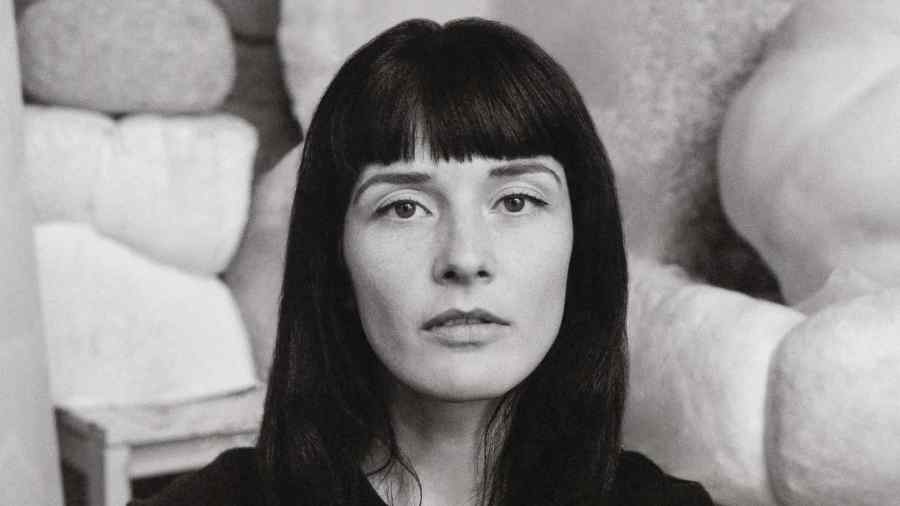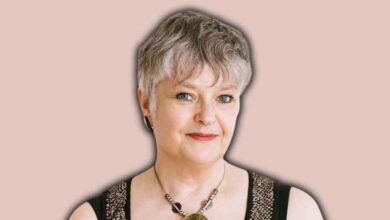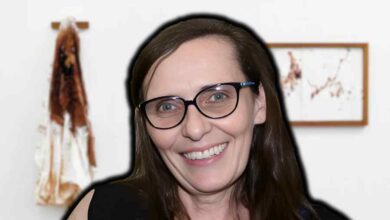Lisa Jahovic: The Visionary Artist Redefining Modern Photography and Sculpture

Lisa Jahovic is a name that resonates with originality, precision, and profound artistic depth. Known for her transformative approach to contemporary photography and sculpture, Jahovic has emerged as one of the most intriguing multidisciplinary artists in Britain today. Her works challenge conventional boundaries between form and function, reality and abstraction, and material and emotion. She brings a unique balance of curiosity and contemplation to everything she creates, making her a true innovator in the world of visual art.
Born in 1985 and based in London, Lisa Jahovic’s artistic journey has evolved through years of exploration, experimentation, and fearless expression. Her work transcends the traditional understanding of objects, inviting the viewer to experience them not just as items of utility but as vessels of emotion and meaning. With a distinctive focus on anthropomorphism and material transformation, she has developed a creative language that is instantly recognisable and deeply moving.
Early Life and Inspiration
Lisa Jahovic’s early life played a significant role in shaping her artistic vision. Surrounded by a culturally rich environment, she was exposed to a wide spectrum of creative influences. From an early age, she displayed a fascination with objects and how they interact with human emotions. Unlike many artists who focus solely on the visual element, Jahovic delved into the emotional and psychological presence of materials.
Her interest in the natural world and the hidden poetry of the mundane also became vital aspects of her artistic identity. The way she perceived a chair, a glove, or a bowl was unlike anyone else — she saw stories, tensions, and life within them. These early curiosities became the foundation for her later works that blend sculpture, photography, and performance art.
A Multidisciplinary Vision
Lisa Jahovic’s practice cannot be confined to a single medium. She seamlessly blends photography, sculpture, film, and performance, creating a multidisciplinary narrative that explores the relationship between people and the objects around them. Her works are often described as both playful and unsettling — they are intimate encounters with form and emptiness.
Her artistic process begins with ordinary materials: wood, fabric, metal, or plastic. But through her manipulation — piercing, bending, or transforming — these items evolve into metaphors for fragility, memory, and transformation. What separates Jahovic from many of her contemporaries is her ability to make the inanimate appear alive. Through subtle shifts in perspective, light, and texture, she breathes emotion into stillness.
The Concept of Anthropomorphism
One of the most defining features of Lisa Jahovic’s work is anthropomorphism — the tendency to attribute human traits or emotions to non-human entities. In her art, objects are not static or decorative; they are living participants in an ongoing dialogue between form and feeling.
In series such as A Map of Absences, she perforates everyday items, creating deliberate voids that symbolise emotional gaps, memories, or losses. The holes, rather than representing destruction, signify presence through absence — a recurring theme in her creative philosophy. The viewer is invited to question what is missing and what remains, engaging emotionally with each piece.
Through this process, Jahovic achieves something remarkable: she turns physical absence into emotional substance. It is not the perfection of the object that moves the viewer, but the vulnerability it reveals.
Notable Works and Exhibitions
Lisa Jahovic’s artistry has gained recognition through prestigious exhibitions and collaborations. Her 2024 solo show, “The Third Drawer”, at Flowers Gallery in London, received widespread critical acclaim. The exhibition featured a collection of transformed domestic objects presented in hauntingly beautiful compositions that blurred the boundaries between function and art.
Her work has also been exhibited internationally, with appearances at major art fairs including Paris Photo 2024, where her sculptural photography was celebrated for its emotional depth and technical mastery. Publications such as Metal Magazine have featured her, describing her style as a dialogue between material vulnerability and conceptual power.
Among her signature works are photographs that depict familiar items like chairs or kitchen utensils in completely new contexts. By altering their surfaces — cutting, piercing, or melting — Jahovic alters not only their form but their psychological weight. The viewer no longer sees an object of use but a symbol of memory, time, and decay.
The Third Drawer: Exploring the Intimacy of Objects
In The Third Drawer, Jahovic explored a theme that resonates universally: the secret, often forgotten spaces within our personal environments. The “third drawer” becomes a metaphor for the subconscious — the place where we hide fragments of ourselves, where forgotten emotions and neglected memories reside.
Each object in this exhibition was carefully selected and transformed to evoke a sense of curiosity and discomfort. The works invited the audience to confront their own relationship with the objects they take for granted. It was less about aesthetics and more about empathy — a reminder that even inanimate things can reflect our emotional landscapes.
Artistic Style and Methodology
Lisa Jahovic’s creative process is methodical yet intuitive. She approaches each object as if it possesses its own personality, history, and secrets. By physically intervening — whether through cutting, folding, or piercing — she begins a silent conversation with the material. The process can take weeks or months, depending on how the object “responds.”
Her photography acts as both documentation and transformation. Once she has reshaped a piece, she captures it through the lens in a way that enhances its narrative. Light plays an essential role in this stage; shadows and reflections become characters in her visual storytelling.
Unlike many conceptual artists, Jahovic does not rely on digital manipulation to create meaning. Her works are tactile, tangible, and authentic, revealing the raw relationship between artist and object.
Themes of Emptiness and Transformation
Across her body of work, several recurring themes stand out — emptiness, transformation, and memory. She invites viewers to engage with the spaces in between: the holes, the voids, the silences. In doing so, she shifts the focus from what is visible to what is felt.
Her fascination with transformation is not limited to physical materials. It also mirrors the emotional transformations humans undergo in life. Every crack, every void, becomes a metaphor for change — for the inevitable evolution of existence.
By highlighting the beauty in imperfection, Jahovic aligns herself with the Japanese concept of wabi-sabi, where transience and imperfection are celebrated as intrinsic parts of beauty.
Critical Reception and Influence
Lisa Jahovic’s work has been praised by critics for its emotional intelligence and philosophical depth. She has been recognised as part of a new generation of artists who merge the boundaries between art forms while maintaining conceptual clarity.
Her exhibitions attract both art enthusiasts and scholars who are interested in material culture and semiotics. Critics have described her art as “poetry in physical form” and “a conversation between silence and sculpture.”
Jahovic’s influence is increasingly visible among younger artists who are exploring similar cross-disciplinary techniques. Her philosophy encourages creators to question not just what they see, but how they feel about what they see.
The Role of Feminine Perspective
A subtle but powerful element in Lisa Jahovic’s work is the feminine perspective she brings to her artistic practice. Her choice of domestic objects — such as utensils, fabrics, or furniture — is not coincidental. These are items historically associated with women’s spaces, and by transforming them, she reclaims their narrative power.
Her art becomes a dialogue about identity, domesticity, and emotional labour. She elevates everyday materials into symbols of strength and resilience, portraying the act of creation itself as a form of liberation.
Personal Philosophy and Legacy
At the heart of Lisa Jahovic’s philosophy lies the belief that art should not only be seen but also felt. She seeks to create experiences that move beyond intellectual understanding into emotional resonance. For her, the role of the artist is not to decorate the world but to reveal its hidden emotions.
She once described her process as “listening to objects until they speak back.” This poetic approach encapsulates her dedication to empathy — both towards materials and the human condition.
Jahovic’s legacy, though still unfolding, is already evident in the growing dialogue her work inspires about the relationship between people and the material world. Her practice stands as a testament to how art can elevate the ordinary into the extraordinary.
Conclusion
Lisa Jahovic represents a rare blend of intellect, sensitivity, and innovation in contemporary art. Through her multidisciplinary approach and emotionally charged creations, she challenges viewers to look beyond the surface of everyday life. Her work redefines how we perceive objects, space, and emotion — transforming the familiar into something profoundly new.
In a world dominated by digital perfection and mass production, Jahovic’s handcrafted, deeply personal art stands as a reminder of humanity’s enduring connection to the tangible. Each of her pieces speaks in whispers — of loss, memory, and rebirth — inviting us to listen closely.



